IT’S HERE. Time to lock down those schedules, people. Comic-Con has released the entire schedule for Wednesday and Thursday and we’ll have a sleection of highlights as soon as our mnd stops boggling. JULY 20 • WEDNESDAY 4:00pm – 6:00pm 1 Teaching with Comics: An Interactive Workshop for Educators Shiley Special Events, San Diego Central Library Peter […]
Viewing: Blog Posts Tagged with: Panels, Most Recent at Top [Help]
Results 1 - 25 of 146
Blog: PW -The Beat (Login to Add to MyJacketFlap)
JacketFlap tags: panels, day 1, Top News, SDCC '16, day zero, Add a tag
Blog: Pub(lishing) Crawl (Login to Add to MyJacketFlap)
JacketFlap tags: YA, Marketing, discussions, Young Adult, Conferences, Miscellaneous, publishers, Panels, conversation, public speaking, publicists, panelists, conversations, Industry Life, in conversation, facilitators, moderating, Add a tag
1) Read the panelists’ books. The best panels in my opinion are the ones in which the moderator asks questions tailored to the author’s works. Obviously, this isn’t always possible, but at least be familiar with the book’s main ideas and stand out points. Don’t be afraid to ask your panelists’ publicists for books. It’s in the publishers’ interests for you to be informed about their author’s works. My secret weapon is to listen to the panelists’ audiobooks, when available. You can make your commute go by faster, and you can listen to them at 3x speed.
2) Send questions ahead of time. Some panelists can answer questions easily on the fly; others would rather visit the dentist than be unprepared. The more you can make your panelists comfortable, the easier time you will have facilitating a conversation.
3) Introduce your authors using the same tone and length. Often moderators will simply read an author’s bio for the introduction, but this invites problems. I recently participated in a panel where the moderator relied on our bios. My own is short and humorous, and doesn’t mention awards or distinctions, whereas the bio of the woman next to me mentioned every degree and award she had received. By contrast, I couldn’t help feeling like the village idiot. This might take a little work on your part to make your intros ‘match,’ but you’ll come across as more polished, and your authors will thank you.
(Note: I have encountered diva/divo panelists who want to be introduced a certain way. I tell them I will do my best, but make no promises. I firmly believe in treating every panelist with dignity and respect, and that means not putting one above the other).
I have spoken on panels where the moderator asks each author to introduce herself, which I find awkward and painful. Not everyone is comfortable talking about herself, and on the flip side, some authors can run at the mouth, viewing the intro as a way to self promote. You can avoid potential awkwardness by doing the honors.
4) Help your audience distinguish between panelists by presenting them as individuals. I have used labels such as, “a rising star,” “a thrilling new voice in contemporary fiction,” “a living legend,” “a NYT bestselling author.” Obviously, make sure your descriptions are complimentary.
5) Go with the flow. A recent panel I moderated featured two authors who were good friends and pros at public speaking. They had great chemistry, and meandered from topic to topic without much prompting from me. I had prepared questions in advance, but found myself needing to replace them with ones that were more natural to the conversation at hand. An additional challenge was to include the third panelist in the discussion as much as possible. This is where a good working knowledge of the authors and their books is essential, because sometimes you have to improvise, and the best way to improvise is to come prepared.
6) Resist letting authors read from their books. I personally find this a waste of time. The audience is there to learn something they can’t learn by merely picking up the book. Plus, not every author is good at, or comfortable with, reading out loud.
7) Remember, it’s not about you. As the moderator, your job is to guide conversations so that the panelists shine. However, this doesn’t mean you can’t bring yourself into the discussion by using examples from your own life to illustrate a particular question. And if you’re asking panelists individual questions, they love it when you’re able to sincerely mention how much something in their writing resonated with you.
8) The moderator sets the tone for the panel, so be personable and engaging. Think of yourself as the first sentence of a novel, the thing that pulls readers into the story. It’s the job of the moderator to engage the attention of every guest in the room.
9) Repeat questions asked by the audience. Just because you can hear a question doesn’t mean the entire room can hear it. Repeating the question also gives your panelists a little more time to think about their answers.
10) Try to have a little fun! Everyone appreciates humor, so if at all possible, weave some into your questions and your introductions—as long as your humor is respectful to the panelists.

Swati Avasthi does a brilliant job moderating a panel at the Multnomah Library that includes myself, Tess Sharpe and Isabel Quintero.
In the comments, let us know if you’ve seen a good moderator recently. Why was s/he good? What things could the moderator have improved upon?
Blog: The Open Book (Login to Add to MyJacketFlap)
JacketFlap tags: Fairs/Conventions, Diversity, Race, and Representation, Diversity 102, diversity on panels, diversity, conferences, panels, Add a tag
 Over the last few years, we have seen the number of panels about diversity skyrocket. It wasn’t long ago that an all-white BookCon lineup inspired the creation of We Need Diverse Books; now, a few years later, we constantly come across conference lineups with multiple diversity-focused panels (take the upcoming YALSA Symposium for young adult librarians, as just one example). Many regional and national conferences have adopted diversity as a conference theme, and we have been invited to speak at multiple Diversity Summits, Diversity Days, and more.
Over the last few years, we have seen the number of panels about diversity skyrocket. It wasn’t long ago that an all-white BookCon lineup inspired the creation of We Need Diverse Books; now, a few years later, we constantly come across conference lineups with multiple diversity-focused panels (take the upcoming YALSA Symposium for young adult librarians, as just one example). Many regional and national conferences have adopted diversity as a conference theme, and we have been invited to speak at multiple Diversity Summits, Diversity Days, and more.
This is a terrific thing. Panels are an important way to keep the focus on this topic and to educate the movers and shakers within all different industries about why diversity matters. The high number of panels focused on diversity is a good indicator that more people are thinking about these issues than ever before.
But here’s the thing about panels: just putting the word “diversity” on a panel and hoping it does the job isn’t enough. In fact, when diversity-focused panels are put together carelessly, they can do more harm than good. As in all other situations, diversity on panel programming must be approached in a nuanced and thoughtful way. Here are a few things to consider before you put together diverse programming for a panel:
- Do you have any diverse people on your Diversity Panel? This seems like a no-brainer, but I have on more than one occasion seen panels focused on diversity that feature only white speakers (in fact, all-white panels are still so common that they inspired this hilarious satire, Rent A Minority). If your panel has a specific focus, such as LGBTQ diversity or racial diversity, you should aim to have multiple people on the panel who can speak with

An NCTE Opening Session panel on diversity from 2014 featuring, from L to R, Rudine Sims Bishop, Rukhsana Khan, Matt de la Peña, Christopher Myers, and Mitali Perkins (image provided by NCTE) authority on that topic. If your panel is more general, you should still aim to populate it with people who can offer a diverse array of perspectives. When marginalized people are in the minority – or missing completely – even on panels that focus on them, it sends a poor message about whose voice matters.
- Have you only invited diverse people to be on your Diversity Panel, or are they also part of other programming? If your panel on diversity has a great lineup of authors of color but the rest of your programming is totally white, you have a problem. This pigeonholes authors of color and reduces them to tools for understanding without allowing them to promote themselves or their work. It also goes against the idea that diverse books are for everyone. For every author of color you put on a diversity panel, try to find several others to put on panels that are not focused on diversity. A mantra I saw recently on Twitter put it best: “Diversity on panels, not diversity panels.”
- Who should your panelists be? Accept that not every diverse author will want to represent his/her community on a panel. For some, the issue may feel too private or personal. For others, this simply may not be their area of interest or expertise. Don’t simply assume all authors of color are interested in being on panels about diversity; not every person of color needs or wants to be an expert in diversity issues in publishing, and the same goes for people from other marginalized groups. Seek out authors who have made this conversation a part of their professional life, spoken about it publicly, and positioned themselves as leaders in the movement.
- Do you actually need a “diversity panel”? Because so many groups have put together so many panels on diversity in the last few years, the topic can begin to feel redundant–in fact, some argue that even the word diversity itself is starting to lose its meaning. Questions like “Why is diversity in books important?” don’t necessarily move the conversation forward. This great article argues that it’s time to move on from Diversity Panels completely. One thing is certain: your audience will get more out of your panel if you can focus it on a specific topic that will resonate with your audience instead of just sticking with “Diversity 101.” Consider what your goals are beyond just general awareness and build a panel around that.
- What do you want people to leave with? Leave time for concrete suggestions and takeaways. Panels are a great way to broaden the conversation, but they can only do so much. In order for real change to occur, people must leave panels inspired to take action. Often the idea of concrete takeaways is left for the very end of panels, as a last question. But by building in time for it and asking panelists to come up with concrete suggestions beforehand to share, you can help ensure that the panel will serve as a building block for the movement.
Here are a few thoughtful articles on the topic for further reading:
Diversity Panels I’d Like to See
Diversity Panels are the Beginning, Not the End
An Unpopular Opinion About Diversity Panels
What did we miss? Share your thoughts in the comments.
Blog: PW -The Beat (Login to Add to MyJacketFlap)
JacketFlap tags: c2e2 2016, panels, programming, C2E2, Top News, Add a tag
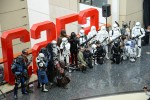 As in past years, the ReedPOP staff was kind enough to make the entire C2E2 programing list available in a handy text format. You can use their own site to set up a schedule, but this is easy to search. And many great panels, from John Cusack to cosplay how tos to Women of Marvel to the future of Hellboy.
As in past years, the ReedPOP staff was kind enough to make the entire C2E2 programing list available in a handy text format. You can use their own site to set up a schedule, but this is easy to search. And many great panels, from John Cusack to cosplay how tos to Women of Marvel to the future of Hellboy.
Blog: PW -The Beat (Login to Add to MyJacketFlap)
JacketFlap tags: NYCC'15, nycc 2015, News, panels, programming, Top News, Add a tag
As in year’s past we are lucky to present to you a complete TEXT listing of the panels for this year’s New York Comic Con. Although ReedPop’s site has them all listed in various editable and serachable ways, it’s still impossible to see everything with all panelists listed in one go. So here […]
Blog: PW -The Beat (Login to Add to MyJacketFlap)
JacketFlap tags: Comics, Art, panels, Weekend Reading, Top News, Top Comics, Friday Countdown, Add a tag
Every Friday, Alex counts down the top five panels & sequences in comics released this week.
Spoilers follow, obviously.
5) Prez #1
Did you know that, if you live in the San Francisco Bay area, this is a real thing?
4) Harley Quinn and Power Girl #1
Chauvinist alien prude had it coming.
3) Ms. Marvel #16
This is more or less how I imagine a meeting between Abed and Dani Pudi’s character from Captain America; the Winter Soldier.
2) God Hates Astronauts #9
Frankly, I have no idea what’s happening here. I’m fine with that.
1) Wayward #8
I am…*uncomfortable.*
Did I mention I was uncomfortable?
What are you favorite moments this week? Comment below or tweet @waxenwings
Blog: PW -The Beat (Login to Add to MyJacketFlap)
JacketFlap tags: Comics, Weekend Reading, Top News, Art, Batman, panels, Saga, Section Eight, Add a tag
Every Friday, Alex counts down the top five panels & sequences in comics released this week.
This week was fantastic, featuring some really outlandish scenes, comedic throwbacks to classic Batman, and a moment that made me laugh, gasp, and shout in awe. I might have peed myself a little with glee.
Spoilers follow, obviously.
5) Spider-Gwen #5
Spidey senses take on hyper-aware-blind-man-senses and produce a colorful spectrum of bloody awesome
4) Batman #41
Series artist Greg Capullo and writer Scott Snyder are two of the most outspoken critics of the half-page Twix ads running throughout DC books this month:
I had to step way out of my more cartoony comfort zone to do this panel. Hindsight, I should’ve left it out pic.twitter.com/T8goKucsfm
— Greg Capullo (@GregCapullo) June 10, 2015
They’re very proud of themselves.
3) Chrononauts #4
drool…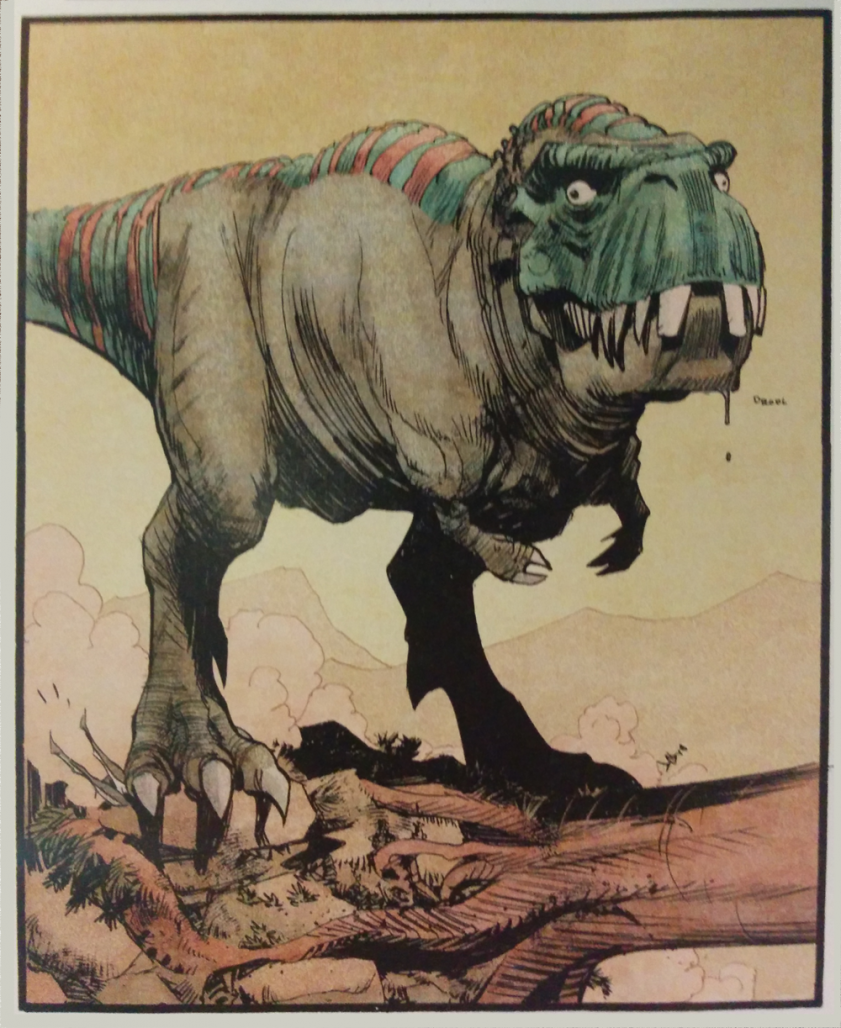
2) All Star Section Eight #1
AH, I WONDERED WHICH WOULD BREAK FIRST!
1) Saga #29
When I saw this on the bottom right of a page, I knew I was going to have an aneurysm…
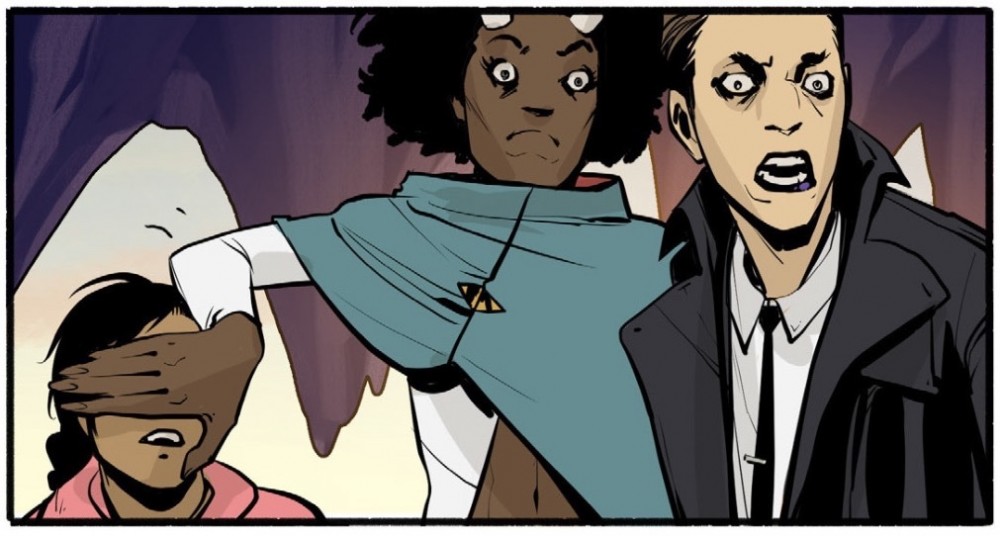
and I totally did.
What are you favorite moments this week? Comment below or tweet @waxenwings
Blog: PW -The Beat (Login to Add to MyJacketFlap)
JacketFlap tags: artists, panels, Los Angeles, booth, Anaheim, LA, panel, Wondercon, Top News, Anaheim Wondercon, booths, sales floor, Books, Comics, Conventions, Art, Breaking News, Add a tag
By Nick Eskey
For the three years that WonderCon has been in the Anaheim convention center, I’ve been very fortunate to attend it. I say fortunate because compared to my local San Diego Comic Con, this one is much more relaxed. Replacing the large media influence and the sardine-cramped spaces, there is ease and Fandom. Easily one of the industry’s conventions that is more beloved by fans.
The convention itself is very well run, usually smooth-as-silk. A few hiccups that occurred this year were the downed elevators used for celebrity talent (which was of course not the fault of WonderCon) and the last minute change of entrances for badge pickup (my press email said Hall H, only to find out I had to go all the way back to A). I did like the addition of the turn-styles at the entrance of the fountain. This did add a redundancy in checking badges, but it kept the people who were passing out advertisements and postcards away from the main doors.
I can’t really say how long I walked the convention sales floor, I just know my feet got a workout. Artists, independent publishers, and exhibitors inhabit much of the booth spaces.
Though the right side is designated as Artist’s Alley, the far left also seemed like a secondary one, with people showing off their original comics or sketches for sale. Quite a few booths were also selling handmade “geekery” like cartoon-inspired dolls, 3D printed figures, and even tentacle kitty plushies. I spent most of my allotted money on art prints (and said tentacle kitty plush).
I really do wish there was more in the way of panels this year. Last year there were a few big movie announcements shown in the Arena area, but for this one it was all smaller panels on the 2nd and 3rd floors. This is where I think SDCC is far superior. It always has the big talent and over the top showings. It is still nice to have the “how to get into the industry” or documentary panels, but a dash of excitement here and there definitely would add considerably to the lineup.
The big announcement was of course that WonderCon would not be in Anaheim next year, but in LA. From what was told at the talkback panel on the last day of the convention, lack of availability surrounding that time period forced the hard decision on the board. As luck would have it, LA’s convention center had a cancellation, and welcomed WonderCon to fill the spot. We all might be a little spoiled in how the Anaheim convention center sits in between two large hotels, as well as being in walking distance to and from Disneyland Park, but isn’t that part of the fun?
LA does boast a collection of hotels and other attractions, but come on; Disneyland. DISNEYLAND!
I’ll still be heading to WonderCon 2016, believe you me. The convention survived it’s San Francisco birth, and flourished in its Anaheim move. Because of this, I am optimistic that it will become even better in this next move. After the explosion of SDCC, CCI has learned that they need to build on WonderCon piecemeal.
Who knows, 2017 might have the convention back in Anaheim. As of now, nothing is set in stone for the far future.
Blog: PW -The Beat (Login to Add to MyJacketFlap)
JacketFlap tags: Secret Wars, ECCC'15, Events, Comics, Marvel, Conventions, panels, Top News, Add a tag
Marvel held a fan panel for their upcoming Secret Wars event. Their big ECCC panel wasn’t an announcement dropper, but it did reveal some key information readers have been curious about. On the deus was C.B Cebulski, Rick Remender, Kelly Sue DeConnick, and Charles Soule. Moderator, Mike Marts jokingly asked Cebulski how he wanted to start things.
“Fight!” Remender chimed in.
Remender then jumped in to talking about Hail Hydra, his contribution to Battleworld. As we knew, the book will be about Ian Rogers being caught in a Hydra ruled world. Remender gushed about once again re-teaming with Winter Soldier collaborator Roland Boschi.
Soule was up next talking about Attilan Rising He compared it to Casablanca of all things. The writer talked about the book having a civil war in it and also taking part on the Civil War piece of battleworld where Captain America never surrendered to Iron Man.
“Aviation Porn” were the words used to describe DeConnick’s Carol Corps book. The intriguing part of the story is that there are no stars in Battleworld’s sky. This made for the interesting conflict of Carol wanting to go up to explore the sky while others wanted to keep her down.
The panel then opened up to Q&A:
It opened with a point many readers have been wondering about. With the current Marvel U ending what memories and continuity will be erased?
Cebulski made it crystal clear, everything that came before will still count. They stood behind their statement of this not being a reboot.
A fan asked about the Fantastic Four’s place in the Marvel Universe and if they’d been downplayed because of the movies?
Cebulsk defended the publishing position of the films not influencing the comics. He even revealed that there would definitely be a Fantastic Four book post Secret Wars.
The question of Secret Wars being used to undo the status quo of Wolverine, Captain America, and Thor was brought up.
Remender interjected, “What comes out of Secret Wars is secret but it will not undo the work we’ve done.” The example of female Thor’s success was given. Jason Aaron will be telling that story for as long as he wants because it stuck with readers.
Another fan asked about Miles Morales being the Marvel U’s main Spidey.
“Peter Parker is still going to be around, he’s not going anywhere.” Said Cebulski.
The last question was about a possible return for Richard Rider (Nova).
Mart’s answered by letting everyone know Duggan has more story to tell with the current Nova Sam Alexander.
The panel wrapped and no matter what Secret Wars is coming. Marvel did try to make it clear that if you want to skip the orbiting books and stick to the spine story; readers can do that. We won’t have to wait long to find out if that’s true as the event is rapidly approaching its launch date.
Are you relieved to find out Peter Parker will still be in the Marvel U? Do you buy that this isn’t Marvel’s reboot? Who do you want for your Captain America going forward?
Blog: PW -The Beat (Login to Add to MyJacketFlap)
JacketFlap tags: Cartoonists, Conventions, panels, Top News, bookcon, Books, authors, Add a tag
BookCon—the consumer-focused book show that is tacked on to the trade BEA show—is expanding to two days this year, May 30-31, with way more authors, more exhibitors and more more. And there will be a very cool panel on comics, on Saturday, May 30th at 11:30am. Here’s the logline:
COMICS ARE AWESOME!Join comics superstars Ben Hatke (Little Robot), Jenni Holm (Sunny Side Up), Jeff Smith (Bone), and Raina Telgemeier (Sisters) as they talk about how comics work, how they make their own comics, and what makes comics so completely awesome. If you’re a fan of comics, don’t miss this great discussion – it’ll have amazing authors sharing their latest work and exciting art drawn right before your eyes! Moderated by Heidi MacDonald (Publishers Weekly).
That’s right, this super awesome panel will be moderated by me; I’ll try to live up to the awesomeness. But getting to listen to four such talented creators in a whole new arena is a very exciting challenge. Be there!
Ticket information for BookCon are in the above link.
Blog: PW -The Beat (Login to Add to MyJacketFlap)
JacketFlap tags: Conventions, panels, Top News, SDCC '14, calvin reid, Add a tag
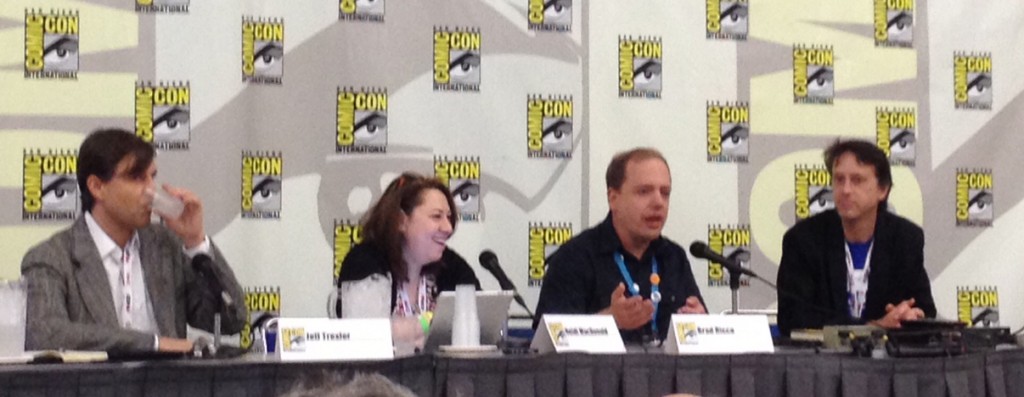
While I’m nowhere near Mark Evanier levels yet, I do have FIVE panels at this year’s Comic-Con, and my Publishers Weekly compatriot has three. It’s a record for both of us! Will I even have a voice left by the time Sunday with it’s back to back show enders rolls around? I hope so! Because all the amazing folks on the panels deserve some voice!
The above photo of from me panelling last year with Pete Coogan, Brad Ricca and Jeff Trexler. That was a great panel, I wish someone had taped it.
In particular, the now annual Comics Jouranlism panel has some new faces along with the regulars that should make for a spunky hour. Please come out and hear us expound at length on points we touch on way too briefly here.
Thursday, July 24
4:00pm – 5:00pm The 9th Annual All-Star Comic Book Podcasters Panel Room 28DE
Get ready for a no-holds-barred debate/discussion of the current state of the geek marketplace. Like sports reporters at the World Series or Super Bowl, these podcast hosts voice their opinions on their weekly shows, but what happens when they face each other, and may not get the last word on a subject? Featuring John Siuntres (Word Balloon), Heath Corson (The Nerdist Writers Panel-Comics Edition), Calvin Reid (Publisher’s Weekly Comics World), Tim Beyers (The Motley Fool), John Mayo(Comic Book Page), and Glen Weldon (NPR Pop Culture Happy Hour).
Friday, July 25
10:00am – 11:00am Publishers Weekly: Behind the Digital Line Room 28DE
As digital comics have become a driving force of the medium, more publishers and creators have launched digital first lines of comics. How do publishers and creators deal with the unique properties of the web and tablet? How do readers react? Are they an evolution from webcomics or their own medium? And how will technological evolution affect storytelling as more choices arise? PW’s Calvin Reid discusses the digital evolution with the people behind digital lines, including Aces Weekly’s David Lloyd, Monkeybrain’s Alison Baker, New Paradigm’s Brandon Perlow, Black Mask Studio’s Matt Pizzolo, and Sequential’s Russell Willis.
1:00pm – 2:00pm The Future of Geek Room 28DE
Will comics’ takeover of pop culture continue, or has geek peaked? Industry-watchers Heidi MacDonald (The Beat), Rob Salkowitz (Comic-Con and the Business of Pop Culture), and Tim Beyers (Motley Fool) follow the money in conventions, movies, and publishing to forecast the future of the fandom business. John Siuntres (Word Balloon podcast) moderates.
3:00pm – 4:00pm Walking the Line: An Investigation into Alternative vs. Mainstream Comics and Beyond Room 28DE
Calvin Reid (Publishers Weekly editor) moderates a panel with Nick Abadzis (author of The Cigar That Fell in Love with a Pipe, Titan’s Doctor Who comic series, and the award-winning graphic novel Laika) Frank Cammuso (author of The Misadventures of Salem Hyde series), Kazu Kibuishi (writer and artist of the Amulet series, and editor of the Explorer series) and Gene Luen Yang (writer and artist of the graphic novel Boxers & Saints) about the overlap between mainstream and alternative comics, and the possibility of a greater collaboration between the two.
4:00pm – 5:00pm Brands Gone Geek: How Media and Marketers Are Harnessing the Might of the Superfan Room 25ABC
Geek culture is winning the war for the hearts, minds, and wallets of consumers. Comic book-inspired stories dominate both the box office and overnight ratings. Major brands are doubling down on their embrace of geek-centric content and its creators. Yesterday’s nerds are today’s key decision makers across all business sectors. What does this all mean for a marketplace that strives to remain relevant? How are producers and publishers of content responsible for turning you into a “superfan” reacting and responding to the challenge? And how are brands and advertisers working together with industry advocates-including your friendly neighborhood comic shop-to keep the “comic” in “comic culture”? Bonfire Agency and a diverse panel of pop culture professionals present a lively discussion and debate. Panelists include publisher Filip Sablik (BOOM! Studios), journalist Heidi MacDonald (The Beat, Publishers Weekly), entertainment marketer Jeff Dellinger (Hero Complex), author Rob Salkowitz (Comic Con and the Business of Pop Culture), comics retailer Joe Field (Flying Colors Comics) media strategist Kris Longo (Geek Riot Media), and Ed Catto (Bonfire Agency). Moderated by Steve Rotterdam, former senior VP of sales & marketing at DC Comics and founding partner of Bonfire Agency.
Saturday, July 26
6:00pm – 7:00pm Comics Journalism: The Hulk Takes a Butt Selfie and You Won’t Believe What Happens Next Room 23ABC
It’s the annual comics journalism panel, and despite what you may have heard, comics journalists are still alive. Are they well? You’ll find out with The Beat’s Heidi MacDonald, Bleeding Cool’s Rich Johnston, and Comics Reporter’s Tom Spurgeon, as they are joined by Eisner Award-nominated Matt Meylikhov of Multiversity, Joshua Yehl of IGN, and Jill Pantozzi of The Mary Sue to talk about what’s new in comics and what’s new in covering them.
Sunday, July 27
3:00pm – 4:00pm Fictionalized Nonfiction: The Art of Combining Fact and Fiction Room 32AB
The Beat’s Heidi MacDonald will get today’s best literary cartoonists to spill their guts on just how they use moments and memories from their lives with actual facts from the time period and how they combine everything into the art of nonfiction or the fictitious memoir. Gilbert Hernandez is the cartoonist behind Marble Season, Bumperhead, and Love and Rockets that touches on his childhood but never tells the full story of his life as one of the famous Hernandez Brothers. Mimi Pond’s Over Easy tells the story of Madge, an art school drop out in the ’70s when hippy met punk, a story close to her own life. David Lasky’s The Carter Family is a biography of the first superstar group of country. MacDonald will ask: Do they draw likenesses from memories or from photographs? Do they take liberties with the facts to tell a more engrossing story? “Fictionalized Nonfiction” will peek into the creative process of today’s leading graphic novelists.
4:00pm – 5:00pm Publishers Weekly: Creating Great Graphic Novel Events in Libraries Room 32AB
Librarians love graphic novels, and graphic novels make for great library events! LIbrary events create more opportunities for everyone by getting more people reading graphic novels, promoting comics to a lasting audience, and bringing the excitement of 21st-century pop culture events to the library setting. Join a spectrum of creators, librarians, and retailers who explain how these events are changing comics and how you can put one on at your own library. With Karen Green (Columbia University), Sven Larson (Papercutz), Jack Baur (Berkeley Public Library), Erwin Magbanua (San Diego Public Library), and others, with moderator Heidi MacDonald (Publishers Weekly, The Beat).
Blog: PW -The Beat (Login to Add to MyJacketFlap)
JacketFlap tags: Movies, Conventions, panels, Rotten Tomatoes, Wondercon, Anaheim Wondercon, Wondercon 2014, Add a tag
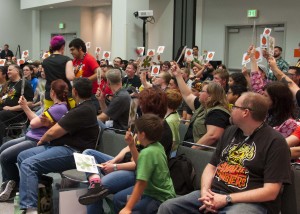 Still upset that that movie you absolutely loved got such negative reviews? Fuming that it got a pretty rotten status on Rotten Tomatoes? Posting an angry rebuttable on a message board will just illicit people calling you a “noob,” and perhaps some other more colorful names.
Still upset that that movie you absolutely loved got such negative reviews? Fuming that it got a pretty rotten status on Rotten Tomatoes? Posting an angry rebuttable on a message board will just illicit people calling you a “noob,” and perhaps some other more colorful names.
Returning to the convention is the always popular Your Opinion Sucks: Rotten Tomatoes Critics vs. Fans. The critics comprised of Tim Ryan, Christy Lemire, Scott Mantz, Alynda Wheat and Alonso Duradle, with Matt Atchity as moderator. Trolls and fans alike can argue with the panel of critics either for or against a movie of their choice, with the audience readied to voice their own opinions with paddles that say “fresh” on one side and “rotten” on the other.
This year, the movies ran the gamut of Ender’s Game, Black Hawk Down, Frozen, and even Grave of the Fireflys. One of the movies that shocked me greatly was when The Goonies was brought up, and half the audience gave it a “rotten” status. The critics too were torn with the movie: Half for it, and half against it. I thought though that the general atmosphere kept a fun and lighthearted vibe. This type of panel is known to create one or two heated debates that almost threaten the removal of somebody, but things remained rather civil.
Most memorable would have to be the first to voice their opinion; a small boy by the name of Gabe. The movie he so passionately argued for was Transformers, saying that the action was outstanding. He then proceeded to demonstrate the action sequences by making shooting motions with his hands and then bomb explosions, all of course complete with ample sound effects. Scott Mantz in particular tore into the boy (with good humor). When given his 30 second rebuttal, Gabe simply said to Scott, “You have no taste!” Gabe as it later turned out is the son of moderator Matt.
Most bizarre was the last person up to pose a movie argument. Standing at the microphone, in what I can only describe as a black muumuu with large red stripes running down the sides of it, was a man who wished to be called “master.” But we’ll call him Zack for this article. Zack wanted to argue against Star Trek: Into Darkness, going as far as to say that the movie was “the worst thing I’ve ever seen.” The crowd pretty much cried in uproar, with a few people in rotten agreement, including a couple of the panel members. What ensued was a discussion on how remakes on pre-existing Star Trek movies shouldn’t happen, alternate time lines, and action sequences. Definitely a fun note to leave the panel on.
It was enjoyable to hear the arguments that each person presented for, or against, a particular movie, even if some of them weren’t as sound as others. Thank you critics of Rotten Tomatoes for making an enjoyable evening of not-so-witty banter, and I can’t wait till next time.
~Nicholas Eskey
Blog: PW -The Beat (Login to Add to MyJacketFlap)
JacketFlap tags: Conventions, Walt Disney, panels, panel, WonderCon, Frozen, Top News, Disney Animation, Walt Disney Animation Studios, Add a tag
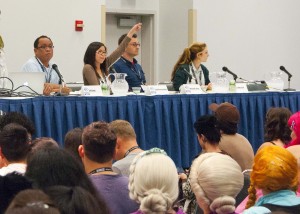 If you’re a warm blooded human and have been out in public, then you’ve most likely heard that wildly popular and award winning song from the movie Frozen. Yeah, you know the one I’m talking about. The one that has gotten so far wedged into your head that brain trauma is the only remedy. Well don’t worry. This article isn’t about that song.
If you’re a warm blooded human and have been out in public, then you’ve most likely heard that wildly popular and award winning song from the movie Frozen. Yeah, you know the one I’m talking about. The one that has gotten so far wedged into your head that brain trauma is the only remedy. Well don’t worry. This article isn’t about that song.
No one can deny that Frozen hasn’t been a homerun for Walt Disney Animation. It has won the first Oscar award for an animated movie for the 91 year old Disney Animation Studios, and reports are claiming that it’s the highest grossing animated picture for the company, ever! A lot of time, planning and work went into this sweep of a film. But aside from the producers, the voice actors, and the animators, there are those that worked well behind the scenes who made the movie the hit it has become: The story artists.
This year at Wondercon Anaheim we were joined by four story artists who worked on Frozen: Jeff Rango, Fawn Veerasunthorn, Nicole Mitchell, and Normand Lemay. Each of them shared what they felt what the term “story” meant for them. Jeff Rango, whose first work with Disney after his three years at Cal Arts was designing the Titans for a little animated film named Hercules, shared that for him, “Story is the architecture of a movie. And [that] the story artist is the architect.”
Jeff is also the man who worked on making the scenes match up well with the movie’s music. “The songs are pretty much done before we start [working] with the scenes. I listen to the songs and try to design the scenes around them.” Jeff worked closely with the music and lyrics composers, Kristen Anderson-Lopez and Robert Lopez, during much of the process. Since the pair lives on the East coast however, Jeff had to do it all over the web. And because he really didn’t live near the animation offices, he had to get there early to make up for the three hour time difference. But he made it work. “Since my drive was an hour and a half both ways, it let me listen to the music probably over a thousand times. It allowed me to get a feel for it.”
Fawn Veerasunthorn, Thailand born and having worked with Disney since 2011, shared that she felt the story process was broken up into two parts. The first of which is more or less pitching ideas, communicating and elaborating with others verbally, and also a little bit of “worrying” too. The ideas that make it through then are then put to a storyboard and sketched out. “With the scene that included Elsa and Anna after the coronation, we originally had it that Hans wasn’t going to be there. But as we sketched it out, we felt that Anna was just talking about her invisible boyfriend. There wasn’t enough Hans.” With the sketches, the story team was also able to focus on some repeating symbolisms. Over and over in the movie we see the gloves (protection/security) and doors (fear/hiding). They were able to decide where these symbols were most effective for each particular scene.
Before any of the scenes are animated, the general ideas have to be discussed and finalized. To get a better idea of what would work for the animation, the artists create what are called “screenings.” They’re basically the proposed scenes drawn out in pencil and animated like a slow flip book. Potential dialogue is also given to each of these hand drawn scenes. “Screenings help put into perspective what will and will not work for the story,” says Normand Lemay. Normand, the Canadian born story artist, has worked for Disney Animation for four years, with Frozen being his first credited work.
What about the snowman do you ask? Where did he come from? Well, you have Jeff Rango to really thank for that. Seen as the more comedic one of the team, he helped to design and name that silly but brainless pile of snow called “Olaf.” “I’ve lived in San Diego, and in [Ocean Beach] there use to be ‘Big Olaf’s Ice Cream.’ I pushed for that guy to be named Olaf.” Jeff also helped much with Olaf’s comedic singing scene, which personally was my favorite singing scene. Guilty pleasure you can call it. But that cute and funny snowman almost ended up on the cutting room floor if it weren’t for one scene that helped solidify his importance. “We decided that it should be Olaf who helped Anna realize that Kristoff might be her real true love and answer,” says Nicole Mitchell. She’s worked with Disney Animation for the last six years, first entering through the trainee program. “That she was loved. It helped Olaf to become a [real] piece of the movie.”
There’s a lot of work that goes into an animated feature. A lot of it is what you see in the final product on the big screen. But like any house, it should be build on a strong foundation. Next time you sit down in a theatre, or flip on your favorite animated movie, don’t forget to thank those who helped form the supporting beams that hold the entire thing up, and allowed it to become something great.
~Nicholas Eskey
Blog: Ellis Nadler's Sketchbook (Login to Add to MyJacketFlap)
JacketFlap tags: animals, watercolour, ink, paint, words, pen, landscape, machine, Nadler, coat, panels, moon, wheels, hole, bridge, pipe, gouache, illustration, music, drawing, Add a tag
Another sketch for the Turning Japanese series.
Ink and gouache A4 size. Click to enlarge.
Blog: Ellis Nadler's Sketchbook (Login to Add to MyJacketFlap)
JacketFlap tags: illustration, dog, drawing, animals, cartoon, pen, mouth, eye, Nadler, panels, moon, nose, fear, iPad, Add a tag
Blog: Ellis Nadler's Sketchbook (Login to Add to MyJacketFlap)
JacketFlap tags: illustration, man, drawing, cartoon, mouth, eye, Nadler, glasses, boat, panels, blue, transport, nose, fire, chair, iPad, Add a tag
Three more images from The Cuckoo Memorandum, a subset of the Turning Japanese series.
All made with Adobe Ideas on iPad. Click to enlarge.
Blog: Ellis Nadler's Sketchbook (Login to Add to MyJacketFlap)
JacketFlap tags: illustration, drawing, animals, cartoon, bird, pen, landscape, machine, eye, Nadler, wash, boat, hat, panels, hand, blue, transport, iPad, Add a tag
A preparatory sketch for the Japanese album.
Procreate on iPad. Click to enlarge.
Blog: PW -The Beat (Login to Add to MyJacketFlap)
JacketFlap tags: panels, Wonder Woman, watchmen, DC Comics, Silk Spectre, Vampirella, Bernie Wrightson, Evan Dorkin, Darwyn Cooke, Terry Moore, Jimmy Palmiotti, Top News, The Kubert School, Amanda Conner, Michele Brittany, WonderCon 2013, Captain Brooklyn, News, Events, Comics, DC, Conventions, Add a tag
“I’m sorry I’m late with my book”, Jimmy Palmiotti said rather humbly, opening a “spotlight” panel on March 31st 2013 at WonderCon, and asked the audience if he ought to put on some “background music”. Amanda Conner, his co-spotlighter, and Palmiotti explained, tongue in cheek, that if the panel appeared “random”, months of deep thought had allowed them to “plan it to be random”. Attendees were already engaged by the humor, and probably by their avid fandom of both Conner and Palmiotti’s work, in this panel Conner and Palmiotti hoped would be “interactive”.
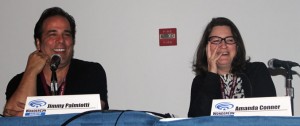 For the first part of the panel, they followed a rough chronology of the story of their working and personal relationship together, but Q &A was welcome throughout. Palmiotti explained that the “magic started” between the couple when he inked a GARGOYLES cover for Conner and a friendship developed between them. This friendship allowed them to learn the “horrible, wonderful sides” of each other, Conner commented. Palmiotti added that they “knew each other insanely well” long before they started dating.
For the first part of the panel, they followed a rough chronology of the story of their working and personal relationship together, but Q &A was welcome throughout. Palmiotti explained that the “magic started” between the couple when he inked a GARGOYLES cover for Conner and a friendship developed between them. This friendship allowed them to learn the “horrible, wonderful sides” of each other, Conner commented. Palmiotti added that they “knew each other insanely well” long before they started dating.
Their first big collaboration, where both provided their own input for a personally satisfying project, involved the VAMPIRELLA comic when Conner asked Palmiotti to create a script where she would be allowed to portray the title character “on the toilet”. Palmiotti, in gallant fashion, concocted a plot involving laxative-laced candy on Halloween, a child-eating demon, and a heroic devourer in Vampirella. Palmiotti encouraged writers to play to the desires of artists and “give them stuff they really want to draw” to produce great results. That’s been their “theme ever since”, he said. Comics have been their “career of choice”, Palmiotti reflected, even though their were “other choices” possible. Conner’s other choices, for instance, included working in advertising, and prior to that, owning a comic book store.
 This chronological tour abruptly leapt to the present as both Palmiotti and Conner commented on keeping late hours, particularly at the con. The “number one rule”, Palmiotti shared sagely, is “never look at the clock. It ruins the night the next morning, worrying about it”. Then the “only indication”, he said, “is hearing birds. I don’t like that”. This commentary had the audience in uniform, vocal agreement. Conner and Palmiotti introduced another recurring topic in the panel, the sheer number of shoes Conner has managed to assemble. She insisted she had no more than 20 pairs of shoes, but Palmiotti remained dubious, putting the number at more like 600.
This chronological tour abruptly leapt to the present as both Palmiotti and Conner commented on keeping late hours, particularly at the con. The “number one rule”, Palmiotti shared sagely, is “never look at the clock. It ruins the night the next morning, worrying about it”. Then the “only indication”, he said, “is hearing birds. I don’t like that”. This commentary had the audience in uniform, vocal agreement. Conner and Palmiotti introduced another recurring topic in the panel, the sheer number of shoes Conner has managed to assemble. She insisted she had no more than 20 pairs of shoes, but Palmiotti remained dubious, putting the number at more like 600.
This speculation was interrupted by a question from the floor about the “timetable” on the planned collaboration CAPTAIN BROOKLYN. Conner explained that she’s working on a “glut of covers” at the moment, but when she’s finished those off, she’s going to stop other work and focus on BROOKLYN. Conner confirmed that they are “thinking about” the possibility of doing a Kickstarter for the project. CAPTAIN BROOKLYN, Palmiotti explained, is about a garbage man in Brooklyn, with a “house full of cats” and “Russian massage parlor girls next door” who has to devise a financial means of helping his sickly grandfather. On top of that, he comes to possess “superpowers that really don’t help his life”. Palmiotti says the book, as scripted, is “funny” but he trusts Conner to “bring it down to earth” and “ground it”, a power he feels is her particular strength as an artist. Her work “has a soul”, he said, “The eyes have a soul”, but he jokingly threatened her with finding a replacement if she doesn’t pick up the production pace.
 Since the panel declared itself to be “interactive”, I asked Conner about her background studying comics art at the Kubert School in New Jersey, and whether she felt it was beneficial to study comics specifically in order to become a professional comics artist. The benefits, she said, of specialized study, is that she now knows how to “use a lot of other tools besides drawing specific to what I want to do”. At the time that she attended the Kubert School, she said, “most other art colleges frowned on comic art” and it was “not respected”. She feels things are “more open now”, but at the time, she said, the Kubert School was “exactly what I needed”. Palmiotti commented that at that time, the Kubert School also had very few women, about 4 in her class, Conner recalled. Now comics are a “little more accepted”, Palmiotti said, and the word “geek” is on the rise.
Since the panel declared itself to be “interactive”, I asked Conner about her background studying comics art at the Kubert School in New Jersey, and whether she felt it was beneficial to study comics specifically in order to become a professional comics artist. The benefits, she said, of specialized study, is that she now knows how to “use a lot of other tools besides drawing specific to what I want to do”. At the time that she attended the Kubert School, she said, “most other art colleges frowned on comic art” and it was “not respected”. She feels things are “more open now”, but at the time, she said, the Kubert School was “exactly what I needed”. Palmiotti commented that at that time, the Kubert School also had very few women, about 4 in her class, Conner recalled. Now comics are a “little more accepted”, Palmiotti said, and the word “geek” is on the rise.
“Now we’re the cool kids and can talk about stupid stuff”, Palmiotti commented, including channeling child-like behavior to geek out about things like films. Both Conner and Palmiotti revealed that they are avid film watchers, and particularly Palmiotti, who goes to the movies a couple of times a week. Conner focuses on particular films that catch her attention, which she watches “repeatedly”. As a kid, she was a huge fan of The Poseidon Adventure, then Star Wars, The Terminator, The Long Kiss Goodnight, and more recently, Kiss Kiss, Bang Bang. Palmiotti’s most recent film enthusiasm is for the film Upside Down, particularly fascinated by this love story featuring reverse gravity fields and conflict between differing worlds.
 An audience member brought up the subject of the completion of Conner’s run on SILK SPECTRE from the BEFORE WATCHMEN series, a project that ran only four issues rather than a possible six. “It could have stretched to 6”, Conner said, but she found it wasn’t necessary to do so. She declared herself relieved to have finished the job, since it was “labor and research intensive” to make sure she “blended it into the original storyline” of the mid to late ‘60’s. Her goal, which made the job more difficult, was to present “not people’s perception of the 60’s, but actually the ‘60’s” in contrast to our current, commercial views of the time period. This quest led her to contact her mother and her aunts, the youngest of which was “Laurie’s age” during the same time period. Palmiotti, who witnessed Conner’s rather excruciating commitment to historical accuracy in her art, came to call SILK SPECTRE “that effin’ book’ (which was the PG-13 version of the phrase).
An audience member brought up the subject of the completion of Conner’s run on SILK SPECTRE from the BEFORE WATCHMEN series, a project that ran only four issues rather than a possible six. “It could have stretched to 6”, Conner said, but she found it wasn’t necessary to do so. She declared herself relieved to have finished the job, since it was “labor and research intensive” to make sure she “blended it into the original storyline” of the mid to late ‘60’s. Her goal, which made the job more difficult, was to present “not people’s perception of the 60’s, but actually the ‘60’s” in contrast to our current, commercial views of the time period. This quest led her to contact her mother and her aunts, the youngest of which was “Laurie’s age” during the same time period. Palmiotti, who witnessed Conner’s rather excruciating commitment to historical accuracy in her art, came to call SILK SPECTRE “that effin’ book’ (which was the PG-13 version of the phrase).
Palmiotti said that Conner “became obsessive with every building” she drew, as well as clothing. The “layout” for Laurie’s house, apparently, was drawn from a single panel featuring a single room in the house in WATCHMEN. Conner built an “entire house” around a living room contained in the original comic. Palmiotti reminded the audience, who then applauded, that Conner’s work on SILK SPECTRE has since been nominated for a Reuben Award in “good company” with Evan Dorkin, and Bernie Wrightson, two of their favorite creators.
I asked Conner and Palmiotti what, particularly, they are looking for that they find attractive in a project in terms of character and plot. Palmiotti replied that he’s looking for several things, including the “soul of a character”, “what they want”, “what they fear” and “something at stake”. He’s very drawn to idea of romance in comic books. “It’s there even in JONAH HEX”, he said. “I like the idea of two people who have something in common, a goal”, Palmiotti explained. Even if he’s writing “horrible people”, he’s “looking for a likeable trait”. His example prompted a lot of laughter from the audience, proving the maxim “It’s funny because it’s true”. He said that even “Hitler’s dog thought Hitler was awesome” because the dog, being fed and tended by his master, could find a likeable trait. You have to “find those things in the characters”, he said, and ask yourself, “Why would we care?”.
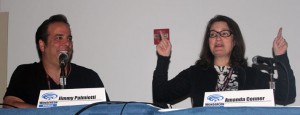 Conner’s particular take on character focuses on the idea of perfection and imperfection. “I try not to make the character so perfect”, she said, preferring to create a character who is “someone like you know”. She wants her comics audience to react by thinking, “I know somebody who’s just like that”. That’s one of the reasons Palmiotti finds Spielberg films compelling, he explained, since they “start with the hero screwing up” and “we relate”. If a hero is “too perfect, there’s push-back”. He doesn’t respond to films where there’s a “super handsome guy and a perfect girl”, finding them “boring”.
Conner’s particular take on character focuses on the idea of perfection and imperfection. “I try not to make the character so perfect”, she said, preferring to create a character who is “someone like you know”. She wants her comics audience to react by thinking, “I know somebody who’s just like that”. That’s one of the reasons Palmiotti finds Spielberg films compelling, he explained, since they “start with the hero screwing up” and “we relate”. If a hero is “too perfect, there’s push-back”. He doesn’t respond to films where there’s a “super handsome guy and a perfect girl”, finding them “boring”.
An audience member’s question about Conner’s work drawing BARBIE in the past led to an energetic discussion of Wonder Woman as a character and the possibilities of new directions for her books. “I would love to write WONDER WOMAN”, Palmiotti admitted; he sees her as “more down to earth, less superior” than some other creators since being “too perfect” is a turn-off, though he thinks some solid work has been done on WONDER WOMAN. He observed that in some WONDER WOMAN comics he’s read, the creators “make everyone else more interesting” than Wonder Woman and he can’t understand that approach. “She’s the most interesting person in the room”, he pointed out, not her surrounding characters. Of course, he added, he would only want to write WONDER WOMAN with Conner as the artist on the project.
 The last few questions fielded by Palmiotti and Conner included their typical work schedules, which they revealed to be opposite, and therefore difficult in timing, Conner’s recollections about her work for indie magazines, which she described as “guerrilla comic book making”, and what comics they like to read right now. Conner cited Terry Moore, finding herself “rivetted” by every story. Palmiotti’s a big fan of Darwyn Cooke’s work, but also always comes home with a “stack” of comics from the shop on Wednesdays. He buys every #1 issue from every company, he revealed, and continues to “try everything… like it’s my job”.
The last few questions fielded by Palmiotti and Conner included their typical work schedules, which they revealed to be opposite, and therefore difficult in timing, Conner’s recollections about her work for indie magazines, which she described as “guerrilla comic book making”, and what comics they like to read right now. Conner cited Terry Moore, finding herself “rivetted” by every story. Palmiotti’s a big fan of Darwyn Cooke’s work, but also always comes home with a “stack” of comics from the shop on Wednesdays. He buys every #1 issue from every company, he revealed, and continues to “try everything… like it’s my job”.
Conner and Palmiotti certainly presented a fully interactive panel, so much so that when panel time ran out, it felt like an interrupted conversation with plenty more to say. Hearing stories from their daily life and their work suggested that the divide, especially for these collaborators, is artificial, with influences moving back and forth constantly. Maybe that’s the secret to their wide-ranging output in comics, and a glimpse of the reason behind the energy they continually bring to the industry. The panel illustrated well the benefits of the “spotlight” approach to con appearances giving enough time and focus on particular creators to generate a conversation with their audiences.
Photo Credits: All photos in this article were taken by semi-professional photographer and pop culture scholar Michele Brittany. She’s an avid photographer of pop culture events. You can learn more about her photography and pop culture scholarship here.
Hannah Means-Shannon writes and blogs about comics for TRIP CITY and Sequart.org and is currently working on books about Neil Gaiman and Alan Moore for Sequart. She is @hannahmenzies on Twitter and hannahmenziesblog on WordPress.
Blog: PW -The Beat (Login to Add to MyJacketFlap)
JacketFlap tags: Wonder Woman, Marvel Comics, archetypes, WonderCon, DC Comics, Green Lantern, Mark Waid, Green Arrow, Dan Slott, Top News, Doug Mahnke, Katana, Ann Nocenti, Cat Woman, J. M. De Matteis, Michele Brittany, News, Events, Comics, DC, Marvel, Conventions, Superman, Icons, Batman, panels, Add a tag
A panel on Friday, March 29th, the first day of programming at WonderCon brought together a rather iconic cast to discuss “iconic characters” and what keeps a character “true” to their origins over long periods of time. Mark Waid opened as moderator by pointing out that the table full of seasoned pros had more than 125 years of comics experience between them and most had worked on longterm characters and newer creations alike. The essential question posed by Waid was how to “vault” characters “into the 21st century without losing what keeps them special”. The question seemed particularly pertinent to Waid, whose ongoing work on DAREDEVIL has evoked critical acclaim. Waid asked his panellists how they handle the “core elements of characters” to face this challenge.
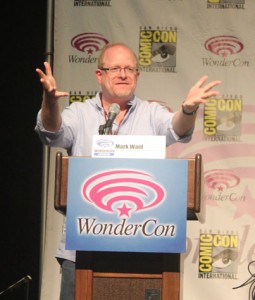 J. M. De Matteis introduced an image that stayed with the panellists as a reference point for discussion. He felt that creators handling long-lived characters work “within a cage”, so they can’t “go wide” with the character in term of change, but they can “go deep” in terms of making new discoveries. For De Matteis, personally, it’s all about the “Big Why” of characters, figuring out what makes them tick. He prefers working with super-villains to pose questions about the formative impact of their past histories because there’s “always a little corner of the psyche to dig into”. Ann Nocenti, however, in her recent work with Catwoman found that “her archetype was pretty clear” as a troubled kid originally, “on the streets” originally, and moving through “foster homes”. Her intuitive approach is to “play with a character and see what feels right” and she doesn’t mind the fact that later creators will do the same with long-term characters. It’s “like treading water”, she said, “You give a sense of constant, dynamic action, but you’re really not moving far”, and she expects later creators to be under the same constraint.
J. M. De Matteis introduced an image that stayed with the panellists as a reference point for discussion. He felt that creators handling long-lived characters work “within a cage”, so they can’t “go wide” with the character in term of change, but they can “go deep” in terms of making new discoveries. For De Matteis, personally, it’s all about the “Big Why” of characters, figuring out what makes them tick. He prefers working with super-villains to pose questions about the formative impact of their past histories because there’s “always a little corner of the psyche to dig into”. Ann Nocenti, however, in her recent work with Catwoman found that “her archetype was pretty clear” as a troubled kid originally, “on the streets” originally, and moving through “foster homes”. Her intuitive approach is to “play with a character and see what feels right” and she doesn’t mind the fact that later creators will do the same with long-term characters. It’s “like treading water”, she said, “You give a sense of constant, dynamic action, but you’re really not moving far”, and she expects later creators to be under the same constraint.
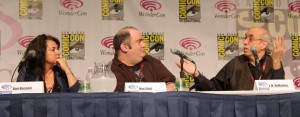 Doug Mahnke’s challenges, as an artist working on long-term heroes, is rather specific, handling costumes and their overtones. He observed that heroes, even today, often don’t look “contemporary” because their appearance has become iconic and we no longer question the anachronism, like Superman’s “underwear outside his pants”. Other features like capes and boots, Mahnke said, “made sense at the time” they were created based on a “swashbuckling” influence. In fact, he explained, an artist’s job is to “bring out the majesty in the character. It doesn’t matter so much what they’re wearing”, but you can use costume as a “tool” to use to your advantage.
Doug Mahnke’s challenges, as an artist working on long-term heroes, is rather specific, handling costumes and their overtones. He observed that heroes, even today, often don’t look “contemporary” because their appearance has become iconic and we no longer question the anachronism, like Superman’s “underwear outside his pants”. Other features like capes and boots, Mahnke said, “made sense at the time” they were created based on a “swashbuckling” influence. In fact, he explained, an artist’s job is to “bring out the majesty in the character. It doesn’t matter so much what they’re wearing”, but you can use costume as a “tool” to use to your advantage.
 Several of the panellists then commented on the fact that objectively, some of the nomenclature and costumes of characters created decades ago would seem “stupid” now. Nocenti’s example was a resurrection of a minor character, Zebra Man who was “visually fantastic” but the name and concept bizarre. Slott felt that once an icon is an icon, “the fact that it’s an icon gives it weight”, preventing further critique from readers. Even Waid’s considered opinion was that “Green Lantern” is a “stupid name for a character, but after 75 years”, it has “gravitas”.
Several of the panellists then commented on the fact that objectively, some of the nomenclature and costumes of characters created decades ago would seem “stupid” now. Nocenti’s example was a resurrection of a minor character, Zebra Man who was “visually fantastic” but the name and concept bizarre. Slott felt that once an icon is an icon, “the fact that it’s an icon gives it weight”, preventing further critique from readers. Even Waid’s considered opinion was that “Green Lantern” is a “stupid name for a character, but after 75 years”, it has “gravitas”.
 The panel then tackled the question of when and how exactly a character becomes officially iconic, and they set the bar high on awarding this status. De Matteis opined that “nothing about the character idea makes it iconic. It’s the execution”, and not every character reaches this status despite reasonably strong storytelling behind them. Dan Slott interjected that it only takes “one writer and one artist to do it”, like Frank Miller on DAREDEVIL. The discussion often drifted into slap-stick commentary on the more absurd aspects of superhero lore like the possession of a super vehicle as an icon accoutrement. Nocenti provided the little known detail that Cat Woman’s car is known as a “Catillac”. Slott confessed to proposing in a “meeting with real adults” that Superman’s car should be known as “Superman’s Ford Taurus of Solitude” with disasterous results.
The panel then tackled the question of when and how exactly a character becomes officially iconic, and they set the bar high on awarding this status. De Matteis opined that “nothing about the character idea makes it iconic. It’s the execution”, and not every character reaches this status despite reasonably strong storytelling behind them. Dan Slott interjected that it only takes “one writer and one artist to do it”, like Frank Miller on DAREDEVIL. The discussion often drifted into slap-stick commentary on the more absurd aspects of superhero lore like the possession of a super vehicle as an icon accoutrement. Nocenti provided the little known detail that Cat Woman’s car is known as a “Catillac”. Slott confessed to proposing in a “meeting with real adults” that Superman’s car should be known as “Superman’s Ford Taurus of Solitude” with disasterous results.
Waid observed that some characters are iconic in pop culture without necessarily being long-lived, like Woody Woodpecker, who’s highly recognizable, but not a currently active character. Waid commented that the tendency toward merchandizing may encourage the slow-down or freeze of new developments in a character since “every character becomes a beach towel” in the end. The entire panel segued into a long and fairly serious discussion of Wonder Woman as a character and why she has, or has not, lived up to her iconic status in terms of actual comic storytelling.
Most felt, like De Matteis, that Wonder Woman comics have not always been “all that good”, nevertheless the character definitely qualifies as “iconic”. Waid had a fairly idiosyncratic theory behind why this is the case. He observed that there was a strong “sexual element” to the “first 10 years of the strip” that was later removed to render the character more “plain vanilla”, and that now, lacking that “x-factor of sexuality”, stories fail to live up to the early days (an issue, he said, he frequently discusses with Grant Morrison). Slott disagreed pointedly with Waid’s assessment. He instead blames the lack of verve in Wonder Woman comics to the fact that comics are essentially a “make dominated industry” that has not explored the “many angles of the character” sufficiently. Slott still feels that if the right team is put together, the stories can rise to iconic status again, without recourse to the “weird quirky bits”. His choice of phrase caused plenty of giggling among the panellists.
This led Waid to ask his panel how they decide what elements are most essential to a character, what continues to translate, and what can be left behind. De Matteis advised to “always approach the characters psychologically and emotionally” and not worry too much about the “other stuff”, and sometimes that psychological appeal can be found in lesser known characters. Nocenti commented that her current work on KATANA based on the strange but intriguing concept of a “girl with a sword” produced “good potential” for developing “obsessional love triangle” elements between herself, her murdered husband, and his murdering brother.“The less iconic a character, the more fun you can have!”, she enthused.
Slott agreed with Nocenti on this idea, up to a point. When you’re handling an iconic character, readers lose the fear that their reckless lifestyles will do them in, whereas if a character is “unknown”, “Everyone is worried”, wondering if they will survive from issue to issue. Slott and Nocenti shared an interesting moment of commiseration, albeit brief, about their mutual killing off of Spider-based characters, and the emotional reaction of fans. “Screw letters from emotional fans”, Slott concluded, laughing, but Waid intervened by informing the audience that he’s sure Slott “weeps himself to sleep at night with 6 year olds’ fan mail” over the death of Spider-Man .
 The panellists didn’t always find their subject matter easy to decipher, nor did they feel that there’s always an easy answer for why some characters “click” as icons and some don’t. Batman, particularly, has a mysteriously successful dynamic, they said. But some things do change. Waid observed that he “couldn’t have imagined a world where I walked down the street and everyone knew who Tony Stark was” until after the Iron Man films had been made. Waid suggested that iconic status for characters might be measured in the number of imitators who have sprung up. De Matteis returned to his general position that archetypal patterns determine iconic status, however. Slott provided examples, stating that Superman is like Hercules, Batman a being on a vengeance-quest, and Tony Stark is, too, iconic in formula, as a combination of “Man and Machine”, an icon that the world is ripe for right now.
The panellists didn’t always find their subject matter easy to decipher, nor did they feel that there’s always an easy answer for why some characters “click” as icons and some don’t. Batman, particularly, has a mysteriously successful dynamic, they said. But some things do change. Waid observed that he “couldn’t have imagined a world where I walked down the street and everyone knew who Tony Stark was” until after the Iron Man films had been made. Waid suggested that iconic status for characters might be measured in the number of imitators who have sprung up. De Matteis returned to his general position that archetypal patterns determine iconic status, however. Slott provided examples, stating that Superman is like Hercules, Batman a being on a vengeance-quest, and Tony Stark is, too, iconic in formula, as a combination of “Man and Machine”, an icon that the world is ripe for right now.
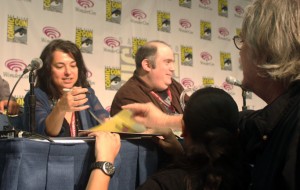 The panellists’ parting thoughts during the Q and A period focused on an interesting point made from the audience about the superhero/villain ratio. With so many more supervillains than superheroes in comics, “recycling” them is the norm, but at what point do they become “stale” and need to be retired, at least for awhile? De Matteis was firm about the roles of the artist and writers, insisting that there are “no stale characters but stale interpretations of characters” and that good work will prevent this problem. “Every character is great if you did into them in the right way”, he said. Waid’s closing example to support De Matteis’ point was that “20-25 years ago, no one would have thought that GREEN ARROW would become 2 times the best selling DC book, and then get his own TV show”. His bottom line: “If you dig deep enough you can find something that resonates”, and that’s the key to creating an icon, something that may not happen overnight.
The panellists’ parting thoughts during the Q and A period focused on an interesting point made from the audience about the superhero/villain ratio. With so many more supervillains than superheroes in comics, “recycling” them is the norm, but at what point do they become “stale” and need to be retired, at least for awhile? De Matteis was firm about the roles of the artist and writers, insisting that there are “no stale characters but stale interpretations of characters” and that good work will prevent this problem. “Every character is great if you did into them in the right way”, he said. Waid’s closing example to support De Matteis’ point was that “20-25 years ago, no one would have thought that GREEN ARROW would become 2 times the best selling DC book, and then get his own TV show”. His bottom line: “If you dig deep enough you can find something that resonates”, and that’s the key to creating an icon, something that may not happen overnight.
Photo Credits: All photos in this article were taken by semi-professional photographer and pop culture scholar Michele Brittany. She’s an avid photographer of pop culture events. You can learn more about her photography and pop culture scholarship here.
Hannah Means-Shannon writes and blogs about comics for TRIP CITY and Sequart.org and is currently working on books about Neil Gaiman and Alan Moore for Sequart. She is @hannahmenzies on Twitter and hannahmenziesblog on WordPress.
Blog: Ellis Nadler's Sketchbook (Login to Add to MyJacketFlap)
JacketFlap tags: books, dog, animals, words, Nadler, cat, panels, moon, print, hole, linocut, woodcut, Add a tag
Before committing to producing a whole series, I thought it best to cut some blocks using different materials. I used wood, lino and plywood for these trial prints. Frankly, there's practically no difference in the outcomes, so I'll probably go with lino for low cost and ease of cutting.
Relief prints approx A4 size. Click to enlarge.
Blog: Ellis Nadler's Sketchbook (Login to Add to MyJacketFlap)
JacketFlap tags: drawing, ink, volcano, pen, landscape, Nadler, wash, panels, sea, Add a tag
From an unrealized project, sketches for a further 54 views of Mt.Fuji. Previous efforts here and here.
Pen and wash, each page 19cm x 12cm. Click to enlarge.
Blog: Ellis Nadler's Sketchbook (Login to Add to MyJacketFlap)
JacketFlap tags: man, animals, bird, words, death, eye, Nadler, hat, panels, hand, blue, print, hole, woodcut, iPad, Add a tag
Ukiyo-e on iPad. Click to enlarge.
Blog: Ellis Nadler's Sketchbook (Login to Add to MyJacketFlap)
JacketFlap tags: man, tree, words, Nadler, panels, blue, print, nose, woodcut, iPad, Add a tag
Ukiyo-e on iPad
Blog: Ellis Nadler's Sketchbook (Login to Add to MyJacketFlap)
JacketFlap tags: poetry, dog, animals, words, eye, Nadler, panels, blue, print, woodcut, iPad, books, Add a tag
Ukiyo-e on iPad. Click to enlarge.
Blog: DIANE SMITH: Illo Talk (Login to Add to MyJacketFlap)
JacketFlap tags: painting, mural, panels, Jill Martin Photography, Add a tag
The mural is now en route to a sign shop where it will be framed and then it will probably wait in storage until the corner of Cook and Broadway is ready for its placement.
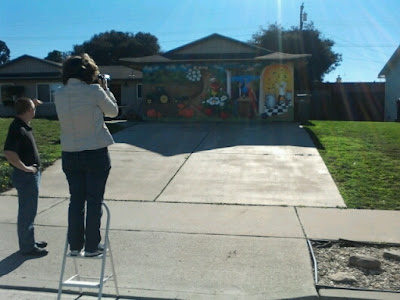 |
| Jill in action - with complicated back-lighting, no less... |
 |
| Saying Goodbye |
View Next 25 Posts




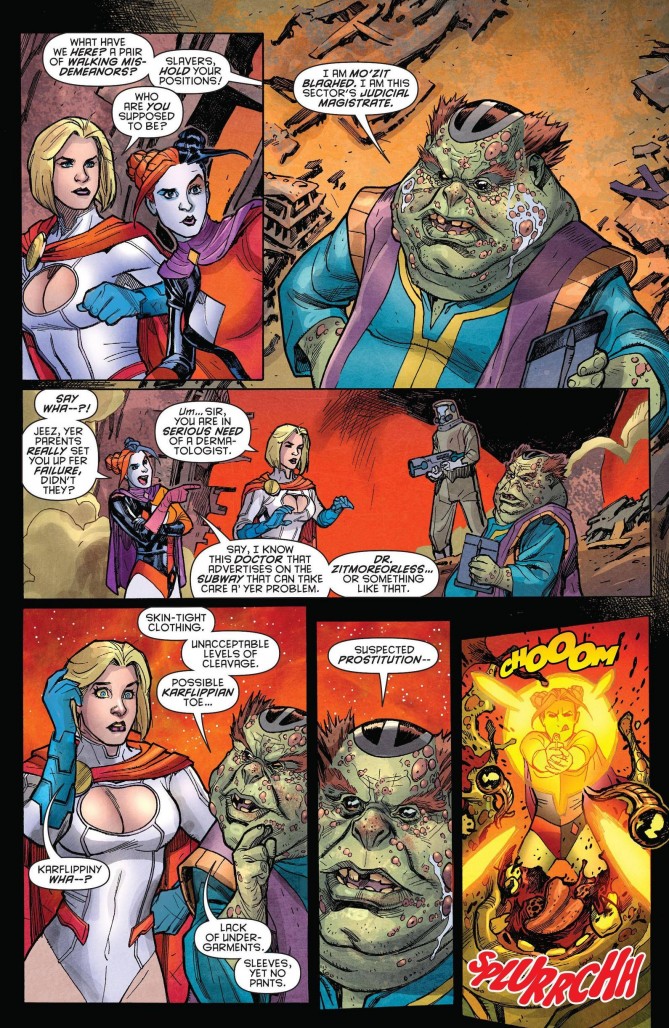
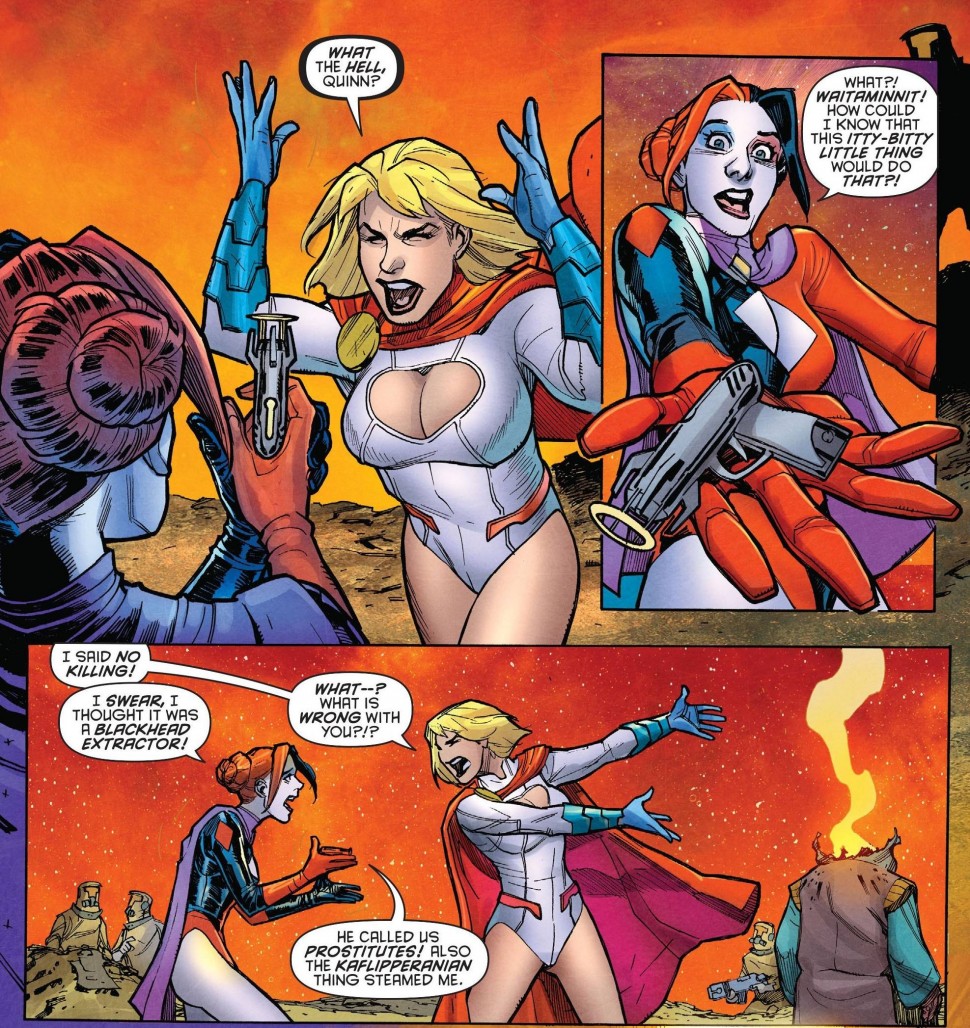
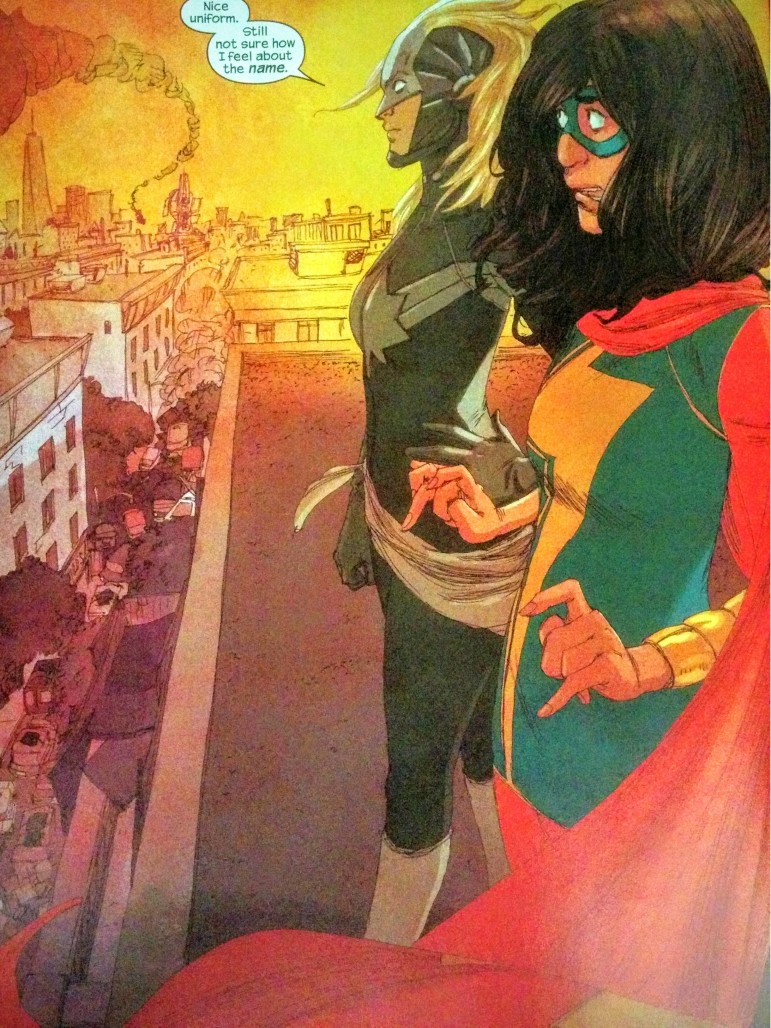
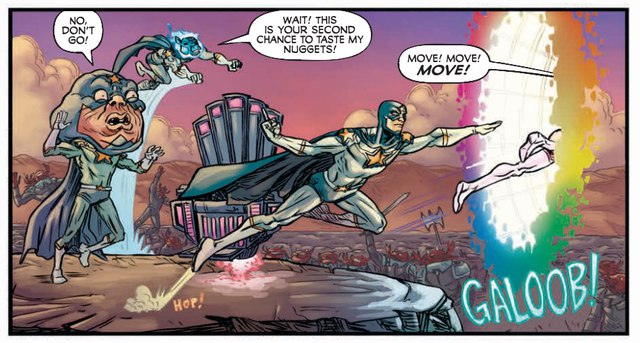
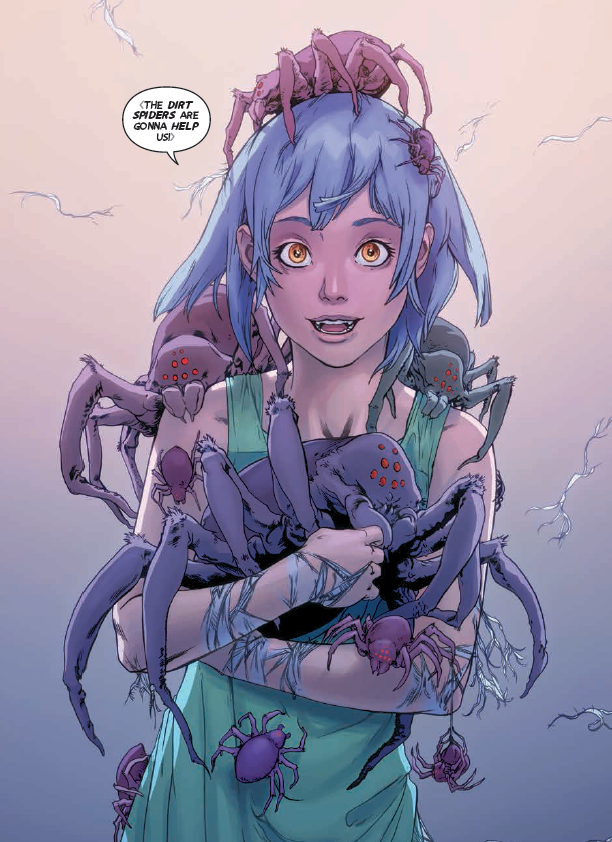
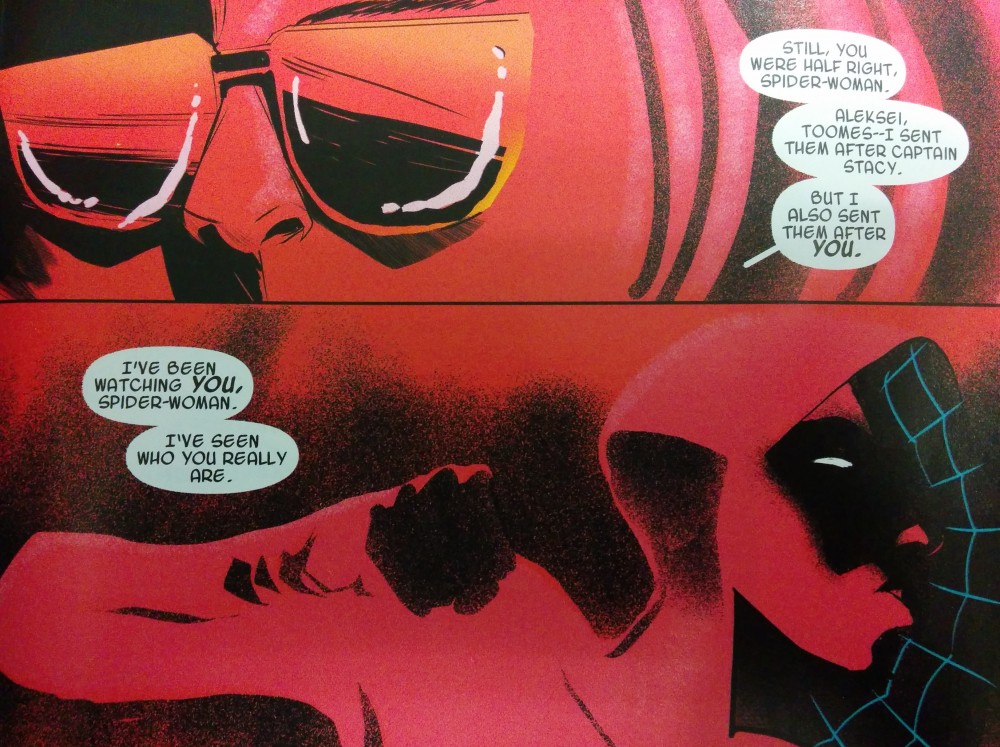

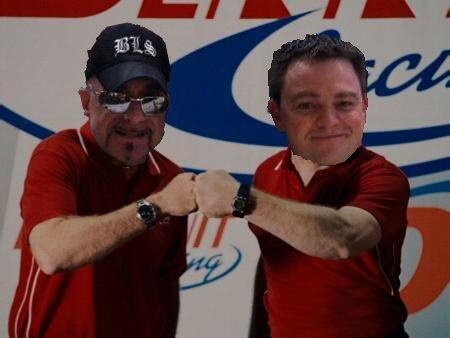
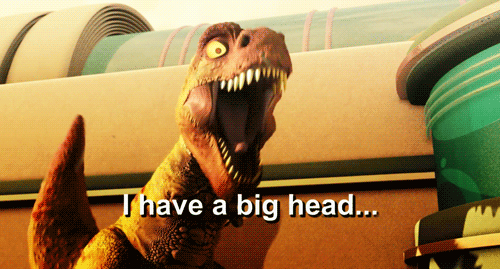
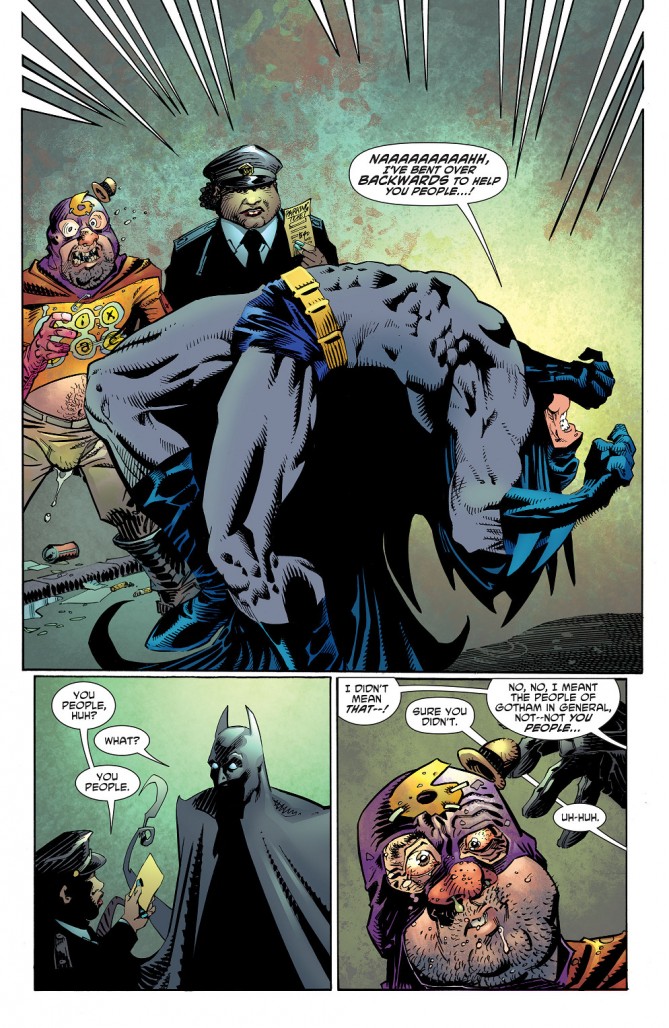
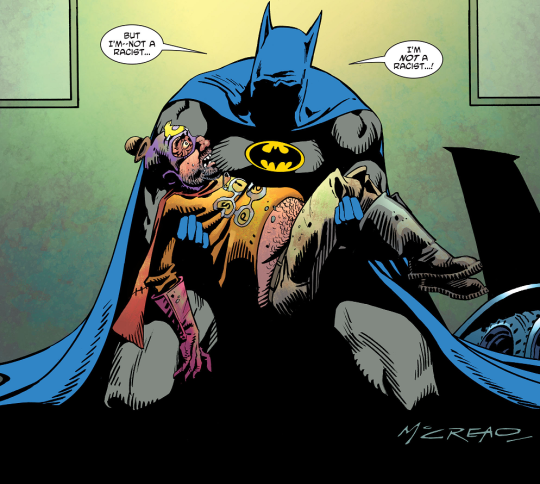
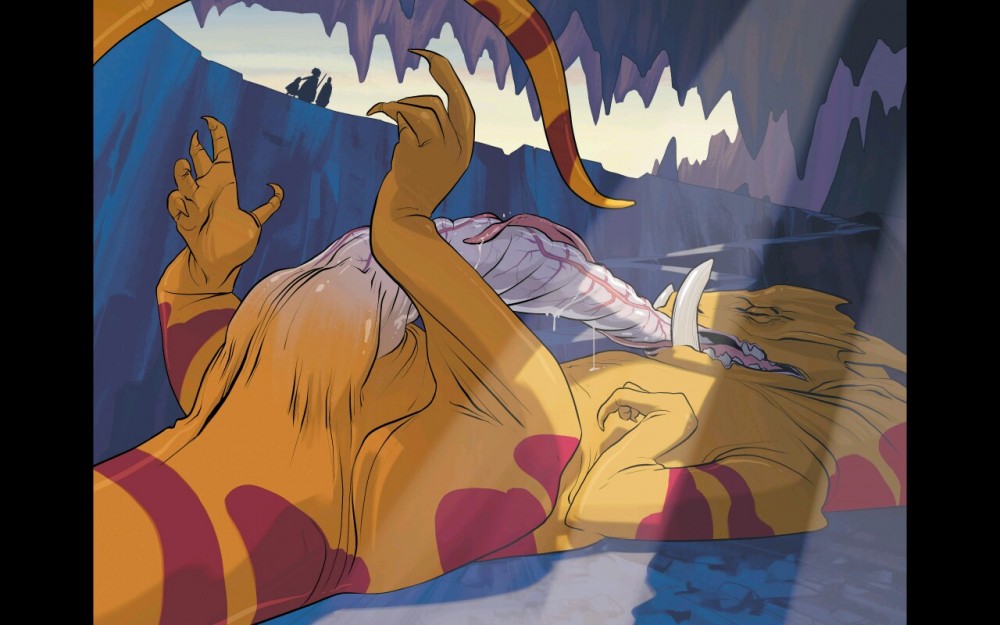
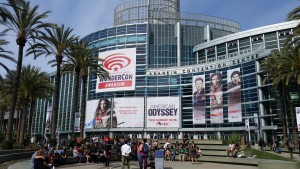
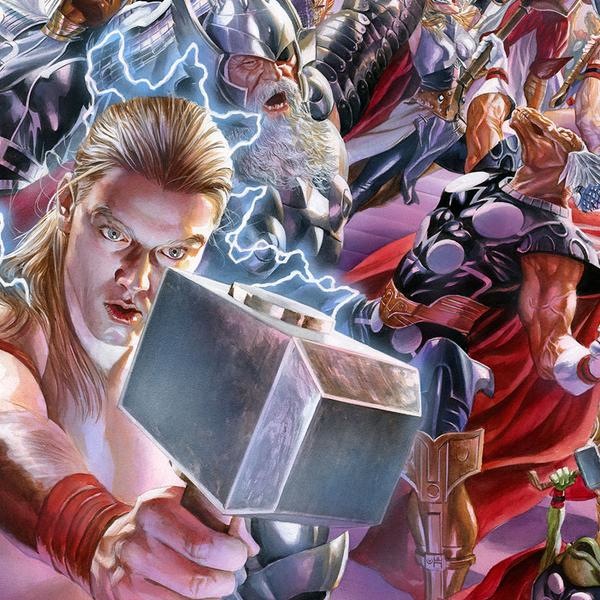
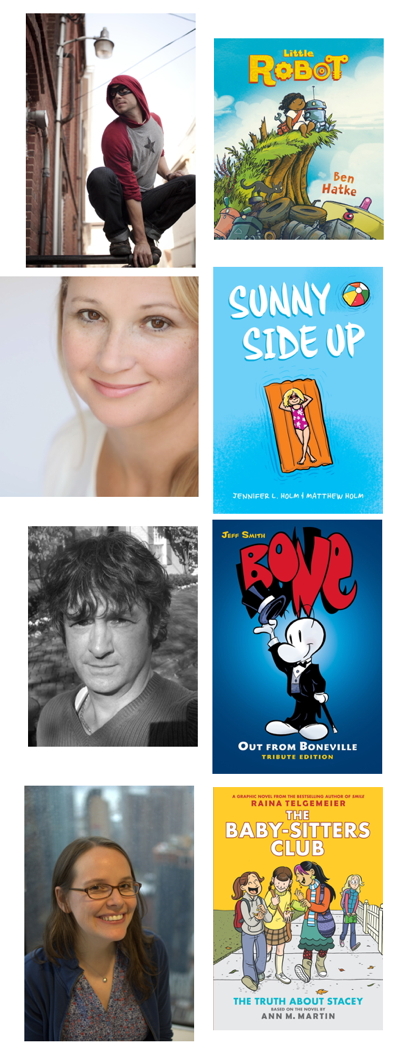












Another issue to consider: 15 percent of the world’s population are people with disabilities, yet we still tend to be vastly underrepresented in literature, among authors, and, yes, among presenters. Sometimes we are underrepresented even in conversations about under-representation!
If this makes you want to be more inclusive of disabled presenters in your guest speaker line up–great! But first, please make sure that people with disabilities are even able to attend your conference. Chances are, you may have unknowingly created accessibility barriers that have made it impossible for them. Is the physical location wheelchair accessible? Including bathrooms? (You would be surprised how often “accessible” just means you can get into the building–but will then have to “hold it” all day because there’s nowhere a wheelchair rider can go to the bathroom). Do you know where or how to put your conference materials in braille, large print, or electronic format (on a flash drive, or via email attachment) so that blind people attending the conference can access your materials? Have you made sure to build a line item into your conference budget for disability accommodations, including sign language interpreters and/or CART (live, real-time transcription for deaf or hard of hearing people or people with audio processing disorder who do not know sign language).
If people with disabilities cannot even come to your conference then how do you expect to deliver diverse voices in your guest speaking line up who can speak to the personal experiences of people with disabilities? For people with disabilities, it’s not enough to just extend us an invitation and hope we’ll turn up. You can’t be inclusive or fully diverse if you aren’t first ACCESSIBLE.
This is such an important and excellent point, Andrea! Thank you for sharing.
[…] DIVERSITY 102: 5 THINGS TO CONSIDER BEFORE PUTTING TOGETHER A DIVERSITY PANEL. […]